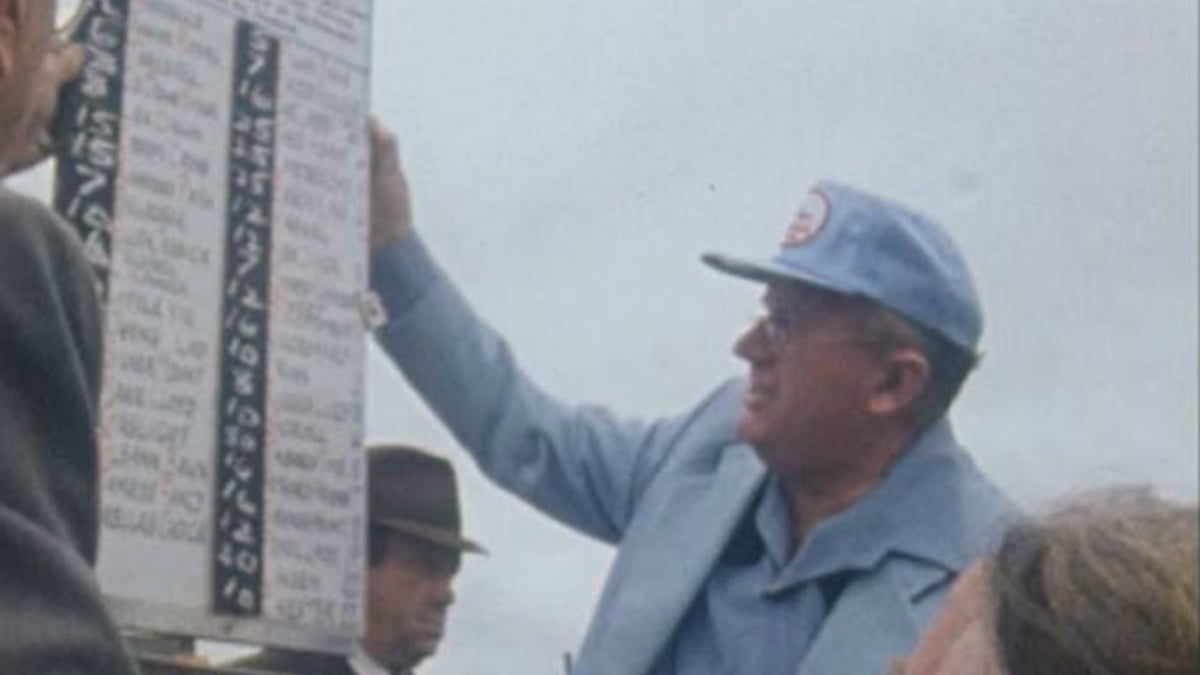Terry Rogers: Remembering The Late, Legendary Bookmaker

Enter ‘Terry Rogers’ into the Google search engine and you’ll find two striking statements again and again: “The man who brought Texas Hold’em to Europe” and the term “Gentleman Bookmaker”.
Of course, someone had to bring Texas Hold’em to Europe and, indeed, there is no disputing it was Terry Rogers that introduced the discipline to his card room, the Eccentric Club. It resided above his betting shop on Hanlon's Corner, Phibsborough, in Dublin and had opened in the late 70s.
In time, Hold’em would spread like wildfire but, passing away on 7th November 1999, just months after the ground-breaking Late Night Poker had made its televisual debut, he would not live to see the gargantuan success the poker genre has become.
Rogers also founded the Irish Open in 1980 which is recognised as the longest running No Limit Texas Hold 'em poker tournament in Europe and second longest in the world after the World Series of Poker.
The Definition Of A Gentleman
The phrase ‘Gentleman Bookmaker’ is bounded around way too much for many people’s liking.
Down the years the term’s definition has unquestionably diminished and it now seemingly refers to a turf accountant that delivers a hamper to your door at Christmas time, an invite to a race-day corporate box when you’ve been on a bad run and phone calls when you have failed to settle your credit account or replenish your deposit account.
The latter is normally equipped with an inducement, such as an offer of an industry top-price on anything you want to back.
But by all accounts – and, in preparing this piece a dozen people gave an account – Terry Rogers satisfied the definition of ‘Gentleman’ in every way. Not just as a bookmaker, not just as a card player, but as a larger than life character who was as generous as he was popular and colourful.

Family Business
“He was a leviathan of the ring,” declares Austin Rogers, Terry’s 55-year-old nephew who regularly accompanied his uncle to the races as a clerk and was an important cog in what was a family business.
“Terry made his name on-course, he took over from my grandfather who started in bookmaking in 1914 and he ran the operation from the late 1940’s alongside my father.
“When I clerked for him in the mid-80’s he would take IR£25,000 to the races for a day’s business. To quantify that you could buy a house for IR£15,000 back then so it has to be the modern-day equivalent of at least IR£100,000-IR£200,000. In those days Terry would lay anything to lose IR£5,000, those kinds of bets were commonplace at the tracks.”
But Terry Rogers was not simply an on-course outfit as Austin Rogers explains. “Terry had shops from the 1950s, they were legal from the 1920s in Ireland, and he also went in as a business partner with my father, Jack, in a snooker club.”
Jack was an international runner who only missed the 1948 Olympics through injury.
When age put paid to that career he turned his attention to billiards and snooker and became a leading amateur player. At the time snooker was still an amateur sport but Terry and Jack still organised international events bringing the likes of Ray Reardon, John Spencer, Doug Mountjoy and Alex Higgins to their Fairview Snooker Club from the mid-60s onwards.
These were not the only sports stars Rogers brought to Irish shores, he played a leading role in bringing Muhammed Ali to Dublin to fight Al ‘Blue’ Lewis at Croke Park in 1972.
In one of many PR coups, a series of pre-fight press conferences were staged in the office of the Irish Boxing Board of Control (of which he was chairman) and it happened to reside in a first floor room above a well signposted Terry Rogers betting office.
“Terry was a great publicist,” Austin Rogers continues. “During the great freeze of the 60’s [there was no horse racing in England or Ireland between 23rd December 1962 and 7th March 1963, apart from a single meeting in January, as this was the coldest winter on record since the 1800s] he would keep his shops open by drawing up a set of runners and race conditions and give customers 20 minutes to make their selections and place bets.
“He could only give customers 20 minutes as the race was a real, albeit historical, contest which would have taken place a year or two beforehand.
“Any more than 20 minutes and punters had a chance of figuring out what race it was and find the result. In effect he was creating the first virtual betting product. Virtual racing may be commonplace now but over 50 years ago it was a unique headline grabber and Terry used it to attain plenty of mainstream TV and newspaper coverage.”
Sweepstake Player
Rogers, who ran amusement arcades in Ireland’s south east (Wexford) and then west coast (Galway) before truly embracing bookmaking, was also a shrewd cookie. He did what very few people ever do, made a handsome profit out of a national lottery.
The Irish Hospitals' Sweepstake was a lottery established in 1930 to finance hospitals but it was not based on winning numbers like new age Lottos.
Instead, purchased tickets were placed in drums and drawn as a big televised spectacle by nurses in uniform. Owners of the ‘winning’ tickets were then allocated a horse in a forthcoming major race such as the Grand National, Lincoln, Cambridgeshire and Derby.
All ticket holders would win a cash prize but the rewards for those who had been allocated the eventual big-race winner (and placed horses) were life-changing.
Given decades of domestic hardship there had been enormous emigration so almost as many ‘Irish Sweeps’ tickets were sold to Irish living abroad as those living within the country. Nevertheless, Terry Rogers would make a point of locating winning ticket holders who had a horse running in a forthcoming big race.
“His ploy was simple,” explains Austin Rogers again. “Terry would hunt down the people who had been allocated the big race fancies and try to do a deal to buy the ticket from them with a stipulation they would receive an additional percentage payment if their horse won.
“He was very fair, it simply gave ticket holders a chance to hedge their own bets and guarantee a better return. Of course, once he owned a ticket, preferably on a favourite, he would lay that horse heavily, marketing a profitable position for himself.”
This line of fairness was underlined in a 2011 blog posting by Colin Mallery who explained: “People often sold them on [winning Sweeps tickets] and Terry Rogers had come over to buy a ticket off a woman in the UK.”
“Mind you – it’s a bit of a wasted trip – her horse was scratched this morning,” he [Rogers] explained before adding: “But I made a deal with her and she didn’t mess me around and offered me a fair price. So I will still give her the money.”
Mallery continued: “I was amazed that this man would continue to buy a worthless ticket because he felt it was the right thing to do. I was even more amazed when he left and slipped a folded Ir£100 note in my top pocket. Every time I did business with Terry Rogers in the years that followed, he would slip a 100-punt note into my pocket.”
Flamboyant and Generous
Such recollections of Rogers’ sense of fair play and generosity are commonplace. This was a character that knew how to look after people and had an acute sense of ‘giving back’. His donations to stretched far and wide, an old folk’s home in Dun Laoghaire where he was born and lived, was one of his favourites.
The statement “he was larger than life” is also bounded around aplenty. When he passed away The Times and Independent newspapers wrote massively complementary obituaries, the former declared: “Terry was cast in an exuberantly flamboyant mould. While there have been layers who bet every bit as big as he did, no one has ever created quite the same image by sheer force of personality.
“Once he stood up on his box a crowd of punters would throng around, some to have a bet but all to enjoy the banter. Like many a politician he was at his best when there was a heckler or two in the crowd.”
In May, 2014, Independent journalist Declan Lynch, in an item discussing the appropriateness of a former bookmaking CEO becoming the head of the Bank of Ireland, wrote: “Now, there was a time in Ireland, and indeed in most advanced societies, when even the mere speculation that a bank might be run by a bookie would cause some excitement. Even, perhaps, a touch of anxiety.”
“Terry Rogers, for example, who was effectively the chairman and chief executive of the Terry Rogers turf accountancy corporation, a man of tremendous energy and charisma and a mathematical genius, would hardly have been in the running for one of the great roles in Irish banking.
“I remember as a boy watching Terry Rogers standing on an upturned crate at the Phoenix Park races, wearing a Panama hat and a pin-striped suit, his colour rising as he shouted the odds, the quintessential bookie.”
At one point Terry Rogers had shares in 53 UK shops. They were sold to Ladbrokes in 1973 and at the time of his death there were ten Terry Rogers betting shops carrying his name in Ireland.

The Hold’em Legend
If bookmaking, boxing and snooker was not enough to keep him busy, Rogers took regular jaunts to Las Vegas, something which sparked an interest in poker and led to a friendship with casino owner Benny Binion. It also saw Rogers transgress into the domain of ‘living legend’.
Rogers was very taken with Texas Hold’em and was keen to bring it to his home club which was playing ‘dealers choice’ games such as Southern Cross, Five and Seven Card Stud.
In 1980 he organised the first Irish Open and the reward for winning it was entry to the World Series of Poker. That prize went to Collette Doherty and in turn she was to become the first non-American woman to play the WSOP main event.
To ready her, and Ireland, for Hold’em, Rogers altered house rules for 5-Card Stud to one card down, three up and one down, in order to replicate Hold’em in some way.
Once again Rogers organised a brilliant PR campaign around Doherty’s and other Irish players’ visit to the World Series and, on arrival in Vegas, Binion had orchestrated a similar media coup and treated the visiting players like royalty.
In future years, as he did with Snooker and Boxing, Rogers brought some of Poker’s biggest names to Ireland: Stu Ungar, Doyle Bronson, Bobby Baldwin, Puggy Pearson and Amarillo Slim all payed the Irish Open at some point during the 1980’s.
In August 1984 he took Ireland’s poker elite to the Isle of Man where a big American entourage were waiting to play a £2,000 entry Hold’em comp he had organised. Famously, the Stetson clad Amarillo Slim rode into the casino from Douglas Airport on a horse so that all the attending press could photograph him.
Liam Flood (another Irish bookmaker who would take on guardianship of the Irish Open after Rogers’ death), Cyndy Violette (one of the first American women payers), Jack Keller (then the World Series of Poker’s champion), Donnacha O’Dea (once an Olympic swimmer later to win a WSOP bracelet for Ireland), Artie Cobb (who’d won his first WSOP bracelet the previous year), Bill Fain, Gabe Kaplan (who appeared in the 70’s sitcom Welcome Back Kotter), Jack ‘Treetop’ Straus (1982 WSOP main event winner) and Suitcase Johnny were amongst the 34 players taking part.
On that occasion it was Liam Flood that prevailed albeit, years later, his part in the line-up was later confirmed as being ‘induced’ by a generous Terry Rogers who had also played his part in Donnacha O’Dea making the WSOP main event final table in 1983.
There was another WSOP main even final table finish for Irishman Noel Furlong in 1989. A great friend of Rogers, Furlong was the man behind one of the greatest Cheltenham Festival coups ever when his Destriero won the 1991 Supreme Novice Hurdle – but that’s another story.
1999: The Decisive Year
But it was a decade later, in May 1999, precisely six months prior to Terry Rogers’ passing at the age of 71, that his Hold’em disciples and fellow Eccentrics truly shone at ‘the big one’ in Vegas.
Mickey Finn finished an admirable 14th, unable to join George McKeever, Padraig Parkinson and Noel Furlong (once again) at the final table. Ultimately, McKeever was to finish seventh, Parkinson third and Furlong claimed the title and the $1 million winner’s prize.
Six months and a day later, reflecting on Rogers’ passing, Furlong told the Irish Times: “He was my mentor at cards. He got me to take up the game originally. I would not have gone to Las Vegas this year to play in the World Series if not for him. He rang me two days before the event started and said, ‘I have two first-class tickets to Vegas.’ He persuaded me to go.”
Sadly, I never personally met Terry Rogers, I moved to Ireland a year after his passing. Back then no local player – alas many have since departed to the big card game in the sky – was dealt a 10-Jack suited without calling it a ‘Terry Rogers’ in reference to his favourite Hold’em, starting hand.
What’s clear is beyond the felt, baize and betting rings, the gambling hotbeds, few Irish people beyond two score and ten will not have heard of the man and the legend.
The part the gregarious Terry Rogers played in the bookmaking industry and Irish culture is no myth, simply something we will never see again.
Stay In The Loop With Free Bets, Insider Tips & More!
Live Betting. Sports Promos. Sent Weekly.









